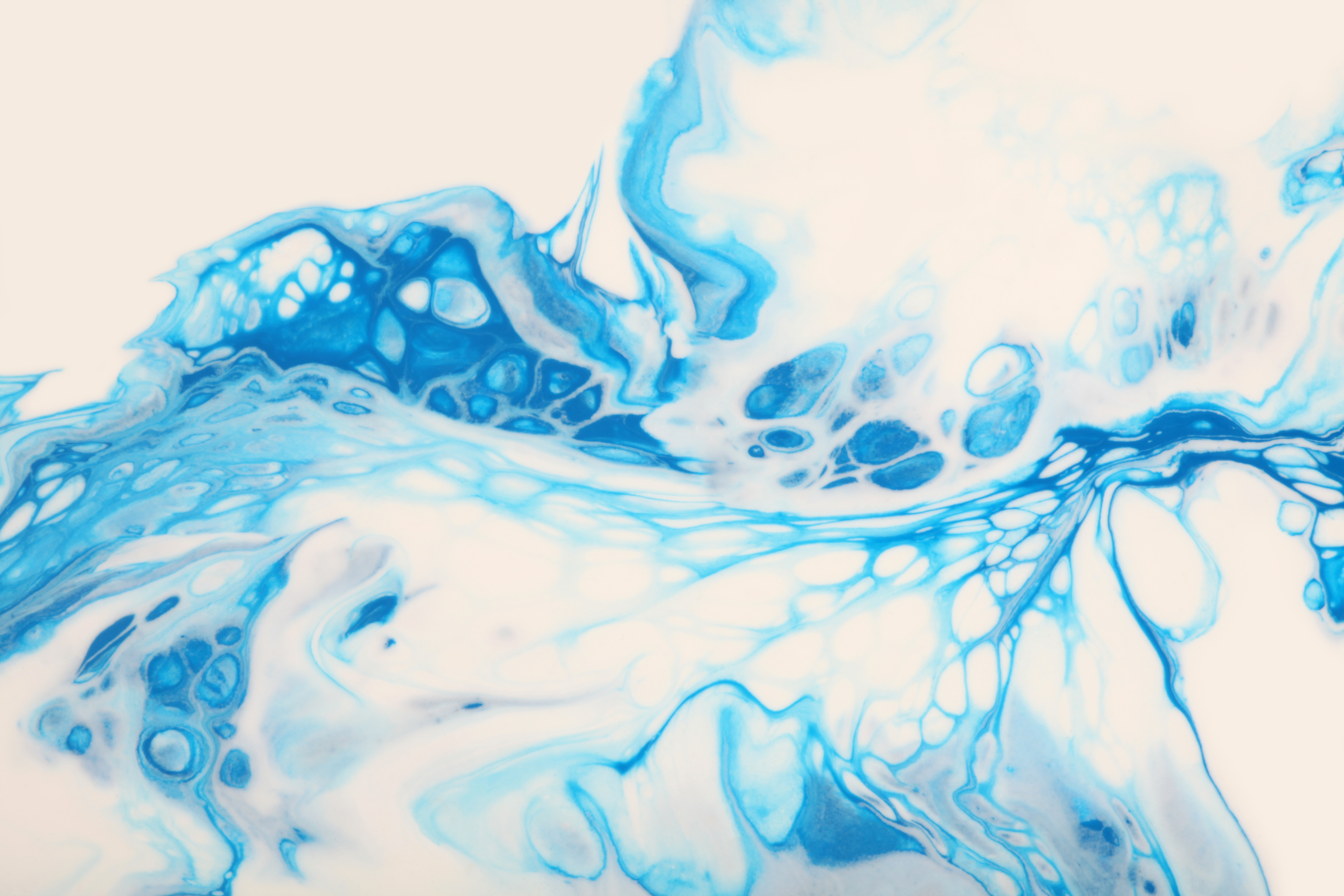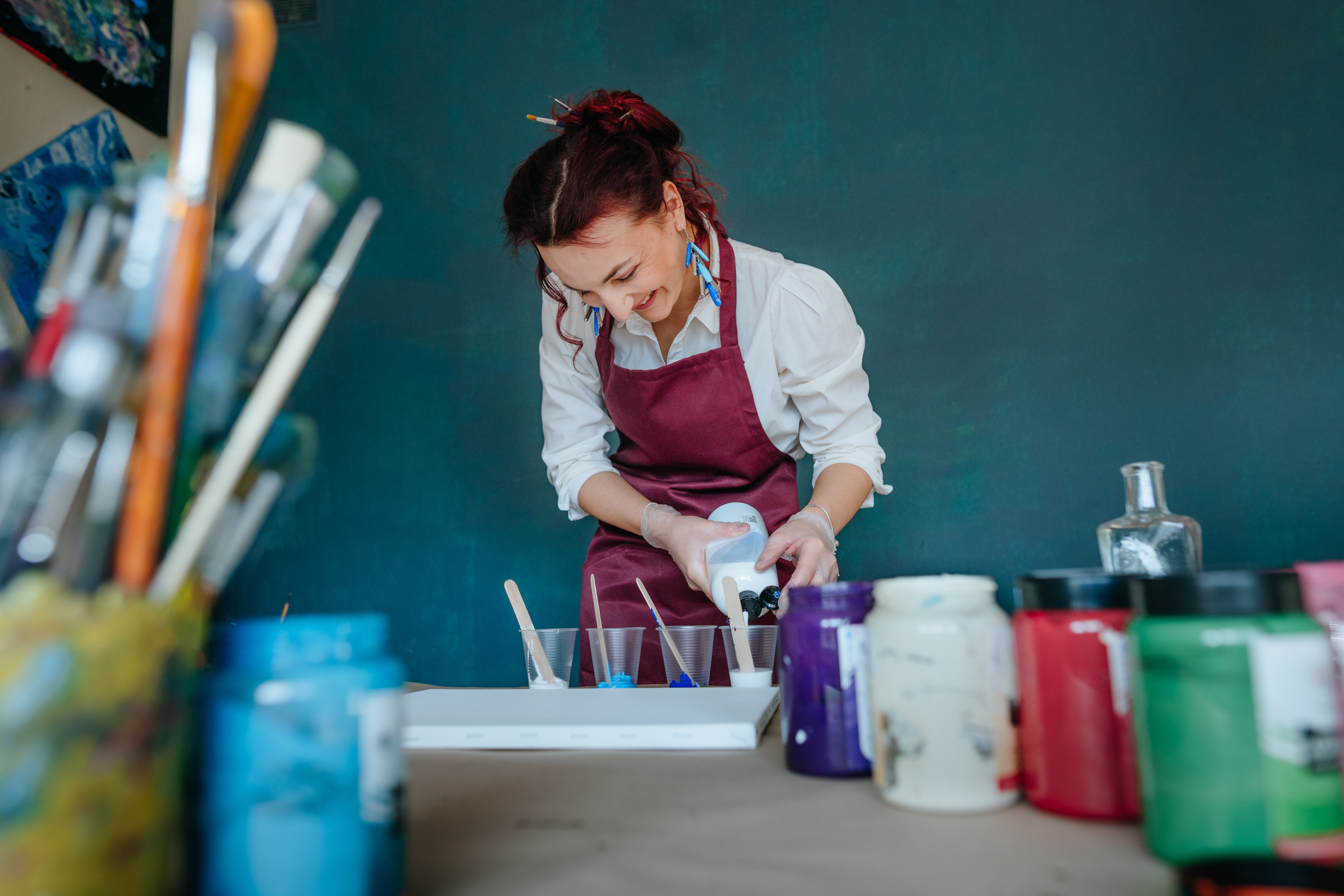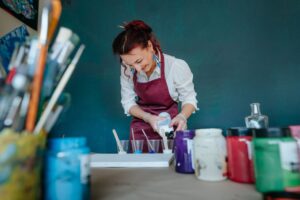Everything a beginner should know about Acrylic Pouring Paint
Acrylic pouring paint is a fun and exciting way to create beautiful abstract art. It involves pouring various colors of acrylic paint onto a canvas or other surface and then manipulating the paint to create unique designs.
To get started with acrylic pouring, you will need some basic supplies such as acrylic paint, a pouring medium, mixing cups, and a canvas. There are many different pouring techniques you can try, including the dirty pour, flip cup, and swipe.
One important thing to keep in mind when creating acrylic pour art is to wear protective gear such as gloves and a mask, as the paint and pouring medium can be messy and potentially hazardous if ingested.
With practice and experimentation, you can create stunning works of art using acrylic pouring techniques. So why not give it a try and see what you can create?

Why buy the paint when we can make it?
Acrylic pouring paint is a popular medium among artists and crafters. It provides a unique look and texture to their artwork. However, buying pre-made pouring paint can be expensive, and it may not always come in the exact color or consistency that you want. That’s why many artists prefer to make their own pouring paint.
Making your own pouring paint allows you to customize the color, consistency, and texture of the paint. Plus, it’s often much more cost-effective than buying pre-made paint. All you need is some acrylic paint, pouring medium, and a few basic supplies.
By making your own pouring paint, you can experiment with different color combinations and techniques to create truly unique pieces of art. It’s a fun and creative way to express yourself and explore your artistic talents. So why not give it a try and see what kind of amazing artwork you can create with your own custom-made pouring paint?
What you need to get started
I have created a list below to help you prepare for the endeavor that is mixing your own paint. It seems like a lot, but is worth it! I have included direct links to these items on amazon to help make purchasing easier. As an Amazon Associate, I earn from qualifying purchases. These links also give you a visual of what you are looking for if you shop elsewhere.
The staples
Stands ( can use upside down cups)
Canvas or something to paint on
Cups to mix paint in
Condiment bottles to store
Wooden sticks to mix
Plastic to protect your area
For the actual paint ( you only need one of the mixers, but can get them all cause they are different)
Pigments
Bulk White Acrylic Paint
Water
Elmers glue
Dish Soap ( cheapest mixer)
Floetrol ( Easiest mixer)
Silicon Oil ( best cells mixer)
Rubbing alcohol ( Another cheap mixer option)
Wood conditioner ( Alternative mixer option)
Extra tools for fun
- Blow Dryer
- Hand held torch
- Wide tooth comb
- Funnel
- Dustpan
recipes for different cell creating mixers
- Dish Soap
- ½ part paint
- ¼ part water
- 1/8 part Elmers glue
- 1/8 part dish soap ( creates cells )
- Pigment as needed
- Floetrol
- ½ part paint
- ¼ part water
- ¼ part floetrol
- Pigment as needed
- Silicon Oil
- ½ part paint
- ¼ part water
- ¼ Elmers Glue
- 2-4 drops of silicon oil
- Pigment as needed
- Rubbing Alcohol
- ½ part paint
- ¼ part water
- ¼ Elmers Glue
- Small splash of alcohol
- Pigment as needed
- Wood conditioner
- ½ part paint
- ¼ part water
- 1/8 part Elmers glue
- 1/8 part wood conditioner
- Pigment as needed
Use Youtube
As you embark on your journey to learn this craft, it’s important to remember that practice makes perfect. Experimentation is key to finding your own unique style and techniques. However, it’s also important to observe and learn from others who have mastered the craft before you. Watching tutorials and videos on platforms like YouTube can be a great way to gain inspiration and knowledge. Don’t be afraid to try new things and take risks in your creative process. With dedication and persistence, you’ll be well on your way to becoming a skilled practitioner.
Some of my favorites are :




2 Responses
The site is just wonderful, I recommend it to everyone I know!
What a good topic